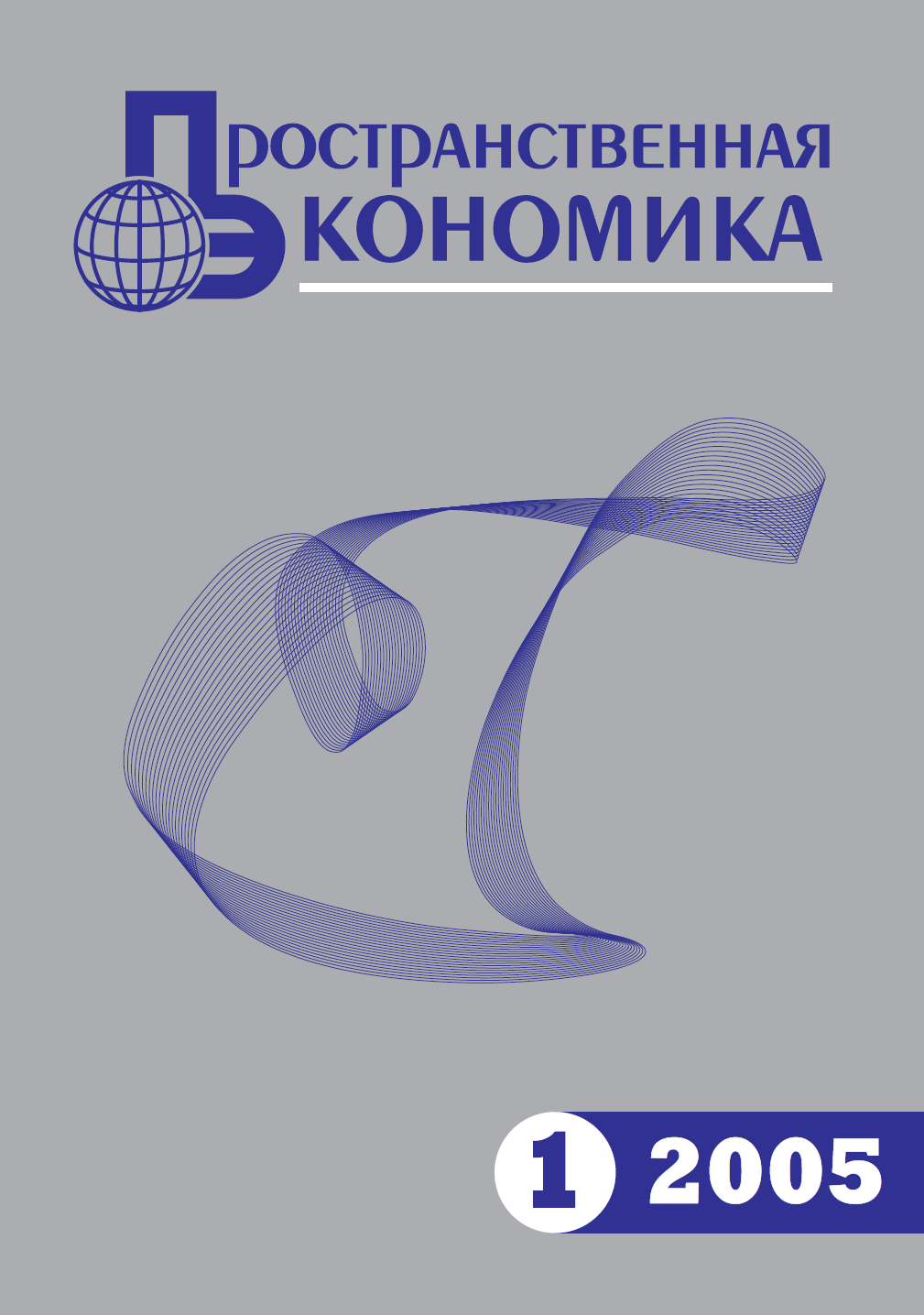| In the section | Review, Discussion, Criticism |
| Title of the article | Paid Services to Population of the Russian Regions |
| Pages | 163-186 |
| Author | Boris Ivanovich Alekhin Doctor of Science (Economics), Professor Russian State University for the Humanities 6 Miusskaya Sq., Moscow, 125047, Russian Federation This email address is being protected from spambots. You need JavaScript enabled to view it. ORCID: 0000-0002-9571-4836 |
| Abstract | The objective of this research is to test the null hypothesis that there is no long-term, equilibrium relationship between the volume of paid services to regional population on the one hand and personal income and government financial assistance to regional users on the other hand. Additionally, we assessed the short-term impact of 15 factors, including the above mentioned, on the volume of paid services. To achieve these objectives, a panel for 82 regions of the Russian Federation for 2000–2022 was compiled from official regional statistics. Using the pooled mean group estimator and the error correction model, we found out that personal income and government financial assistance are cointegration partners of the volume of paid services: their relationship is indeed long-term. The volume of paid services was positively elastic with respect to its cointegration partners. Every additional ruble of personal income or government financial assistance does not simply replace the ruble paid by the user; it frees it for new purchases. Regression analysis of the impact of 15 factors on the volume of paid services (all in log form) was carried out assuming the existence of not only long-term but short-term relationships as well. Stepwise (forward) regression with very strict parameters produced seven factors with major economic loadings. In particular, it demonstrated a positive relation between the volume of paid services on the one hand and per head consumer expenditures and age structure of regional population on the other hand. Also, the volume was negatively related to regional inflation and proved to be inelastic with respect to all these factors |
| Code | 338+330.44+332.13 |
| JEL | R110, D120, H240 |
| DOI | https://dx.doi.org/10.14530/se.2025.1.163-186 |
| Keywords | paid services, panel data, cointegration, regions, Russia |
| Download | SE.2025.1.163-186.Alekhin.pdf |
| For citation | Alekhin B.I. Paid Services to Population of the Russian Regions. Prostranstvennaya Ekonomika = Spatial Economics, 2025, vol. 21, no. 1, pp. 163–186. https://dx.doi.org/10.14530/se.2025.1.163-186 (In Russian) |
| References | 1. Abdullaeva M.A. Regional Features of Payable Market Development Services. Vestnik Tadzhikskogo Gosudarstvennogo Universiteta Prava, Biznesa i Politiki = Bulletin of the Tajik State University of Law, Business and Politics, 2011, no. 2 (46), pp. 63–69. (In Russian). 2. Adkins L.C., Waters M.S., Carter Hill R. Collinearity Diagnostics in Gretl, 2015. Available at: (accessed November 2024). 3. Barmina K.V., Shinkevich M.V., Galimulina F.F. Multi-Factor Modeling of the Development of Paid Services to the Population. Nauchnoe Obozrenie. Seriya 1: Ekonomika i Pravo = Scientific Review. Series 1: Economics and Law, 2020, no. 5, pp. 70–79. (In Russian). 4. Bashmachnikova E.V., Abramova L.A. Prediction of Potential Capacity of the Regional Market of Payable Services to the Population. Aktualnye Problemy Ekonomiki i Prava = Actual Problems of Economics and Law, 2015, no. 1, pp. 141–147. (In Russian). 5. Belikova E.V., Chernyavskaya E.Y. General Trends in Consumption of Paid Services in Russia. Nauchnyy Vestnik Volgogradskogo Filiala RANKHiGS. Seriya: Ekonomika = Scientific Bulletin of the Volgograd Branch of the Russian Presidential Academy of National Economy and Public Administration. Series: Economy, 2019, no. 2, pp. 106–112. (In Russian). 6. Belsley D.A., Kuh E., Welsch R.E. Regression Diagnostics: Identifying Influential Observations and Sources of Collinearity. New York: John Wiley & Sons, 1980, 292 p. 7. Bushin P.Ya. Comparative Characteristics of the Dynamics of Cost Structure for Paid Services of Population in Regions of Far Eastern Federal District. Regionalistica [Regionalistics], 2017, vol. 4, no. 1, pp. 38–47. (In Russian). 8. Engle R., Granger C.W.J. Co-Integration and Error Correction: Representation, Estimation, and Testing. Econometrica, 1987, vol. 55, no. 2, pp. 251–276. 9. Farrar D.E., Glauber R.R. Multicollinearity in Regression Analysis: The Problem Revisited. Sloan School of Management; Massachusetts Institute of Technology. Cambridge, 1964, 50 p. 10. Gukejeva L.Z., Shokumova R.E. Statistical Analysis of the Volume of Paid Services to the Population of the Kabardino-Balkarian Republic. Sovremennye Tendentsii v Ekonomike i Upravlenii: Novyy Vzglyad [Contemporary Trends in Economics and Management: New Perspective], 2015, no. 37-1, p. 130–137. (In Russian). 11. Kantorovich G.G. Time Series Analysis. Ekonomicheskiy Zhurnal Vysshey Shkoly Ekonomiki = Higher School of Economics Economic Journal, 2003, no. 1, pp. 79–103. (In Russian). 12. Pesaran М.Н. Testing Weak Cross-Sectional Dependence in Large Panels. Econometric Reviews, 2014, vol. 34, issue 6–10, pp. 1089–1117. 13. Pesaran M.H., Shin Y., Smith R. Pooled Estimation of Long-Run Relationship in Dynamic Heterogeneous Panels. Cambridge Working Papers in Economics, 1997, 32 р. Available at: (accessed Bebruary 2025). 14. Soldatkina O.V., Shestakova E.V. Development of the Sphere of Paid Services in the Orenburg Region. Modern Trends and Technologies of Regional Potential Development. Saint Petersburg, 2021, pp. 62–68. (In Russian). |
| Financing | |
| Submitted | 09.08.2024 |
| Approved after reviewing | 10.10.2024 |
| Accepted for publication | 13.01.2025 |
| Available online | 31.03.2025 |
